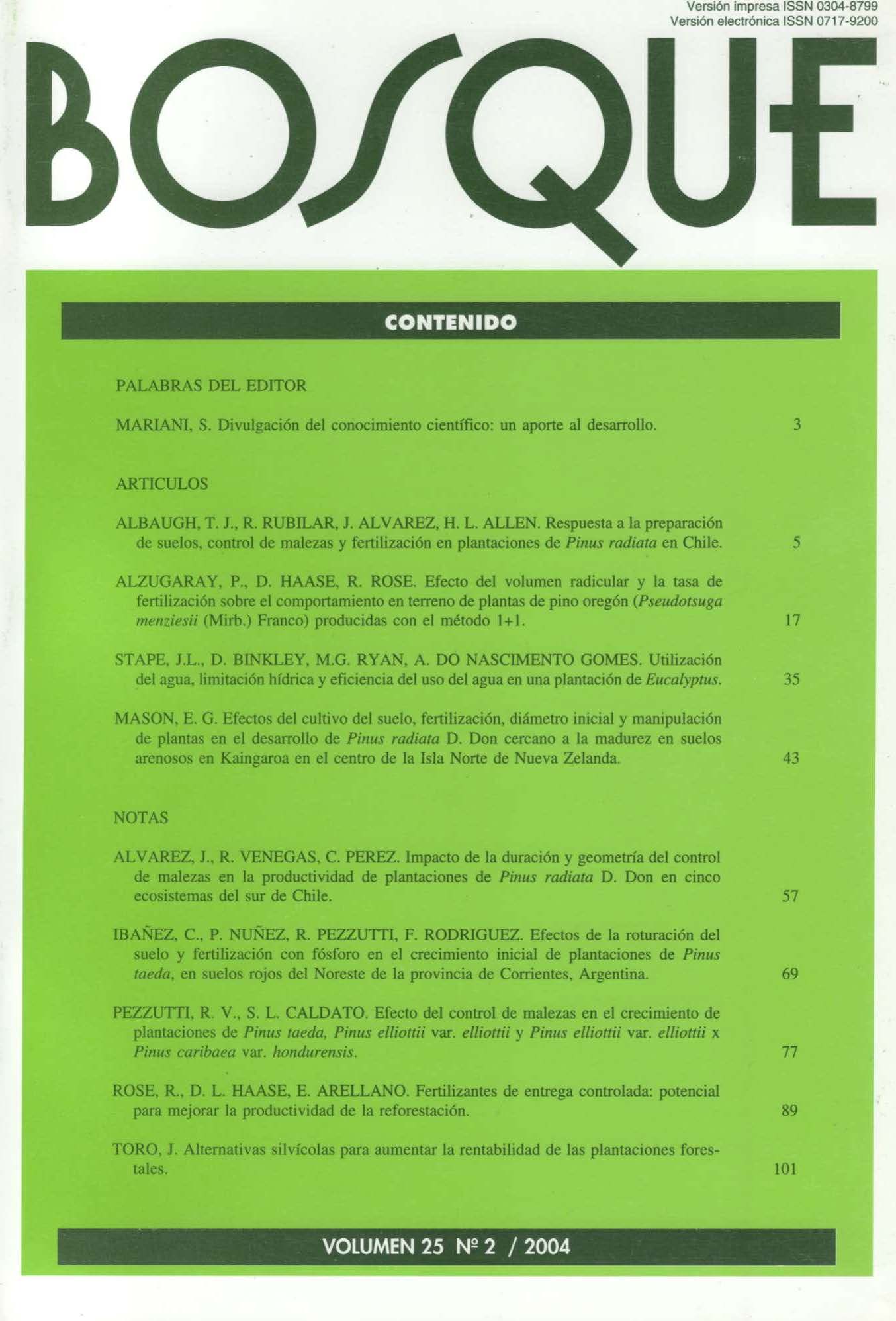Effects of preplanting root volume and fertilization rate on field performance of 1+1 Douglas-fir (Pseudotsuga menziesii (Mirb.) Franco) seedlings
Main Article Content
Abstract
To determine the combined effects of the preplanting root volume and fertilization rate on seedling field performance, Douglas-fir 1+1 seedlings, grown using standard practices at the Weyerhaeuser Aurora nursery (Oregon, USA), were sorted into four root-volume categories (8–13, 14–17, 18–22, and 23–35 cm3), and planted in a recent clearcut in Oregon State University’s McDonald–Dunn Research Forest on January 19, 2000 using a complete randomized block design with five replicates in a factorial treatment arrangement. A Simplot Polyon® fertilizer mixture, containing equal parts of three fertilizers with different release rates (3-4, 5-6, and 8–9 months) and similar NPK concentrations (19-6-12) was applied at the time of planting in the bottom of the planting hole to each root-volume category at five rates: 0 (unfertilized control), 15, 30, 45 and 60 g per seedling. After two growing seasons in the field, there was no interaction between root volume and fertilization rate for seedling growth and survival. Seedlings with a larger preplanting root volume had greater survival and growth than seedlings with a smaller root volume. There was a significant reduction in seedling survival and growth with increasing fertilization rate.

